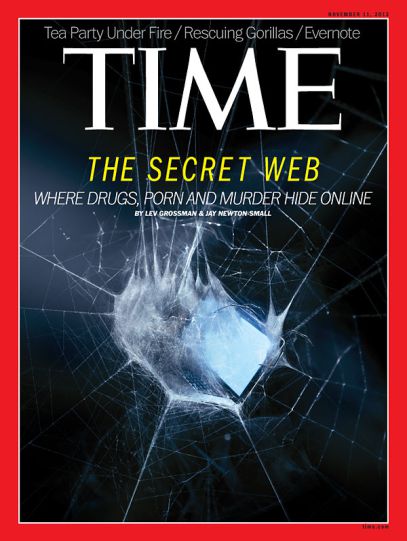
TIME explained the Deep Web in a 2013 cover story
Ross Ulbricht’s trial for his alleged role as “Dread Pirate Roberts,” the owner of the shadowy online market place Silk Road, is scheduled to begin Tuesday. Ulbricht was indicted last year for operating the site, which allowed users to buy and sell drugs anonymously. He was charged with narcotics conspiracy, engaging in criminal enterprise, conspiracy to commit computer hacking and money laundering conspiracy. As part of the indictment, Ulbricht is accused of running the website on “The Onion Router,” concealing IP addresses and hiding the locations of Bitcoin transmissions.
If all that sounds complicated, that’s because it is.
Shortly after Ulbricht’s arrest, TIME’s Lev Grossman and Jay Newton-Small profiled Silk Road and the world in which it operated. As they explained, there’s a reason the details are difficult to nail down. After all, that’s the whole point:
On the afternoon of Oct. 1, 2013, a tall, slender, shaggy-haired man left his house on 15th Avenue in San Francisco. He paid $1,000 a month cash to share it with two housemates who knew him only as a quiet currency trader named Josh Terrey. His real name was Ross Ulbricht. He was 29 and had no police record. Dressed in jeans and a red T-shirt, Ulbricht headed to the Glen Park branch of the public library, where he made his way to the science-fiction section and logged on to his laptop–he was using the free wi-fi. Several FBI agents dressed in plainclothes converged on him, pushed him up against a window, then escorted him from the building.
The FBI believes Ulbricht is a criminal known online as the Dread Pirate Roberts, a reference to the book and movie The Princess Bride. The Dread Pirate Roberts was the owner and administrator of Silk Road, a wildly successful online bazaar where people bought and sold illegal goods–primarily drugs but also fake IDs, fireworks and hacking software. They could do this without getting caught because Silk Road was located in a little-known region of the Internet called the Deep Web.
Technically the Deep Web refers to the collection of all the websites and databases that search engines like Google don’t or can’t index, which in terms of the sheer volume of information is many times larger than the Web as we know it. But more loosely, the Deep Web is a specific branch of the Internet that’s distinguished by that increasingly rare commodity: complete anonymity. Nothing you do on the Deep Web can be associated with your real-world identity, unless you choose it to be. Most people never see it, though the software you need to access it is free and takes less than three minutes to download and install. If there’s a part of the grid that can be considered off the grid, it’s the Deep Web.
Read the rest of the story, here in the TIME Vault: The Deep Web








